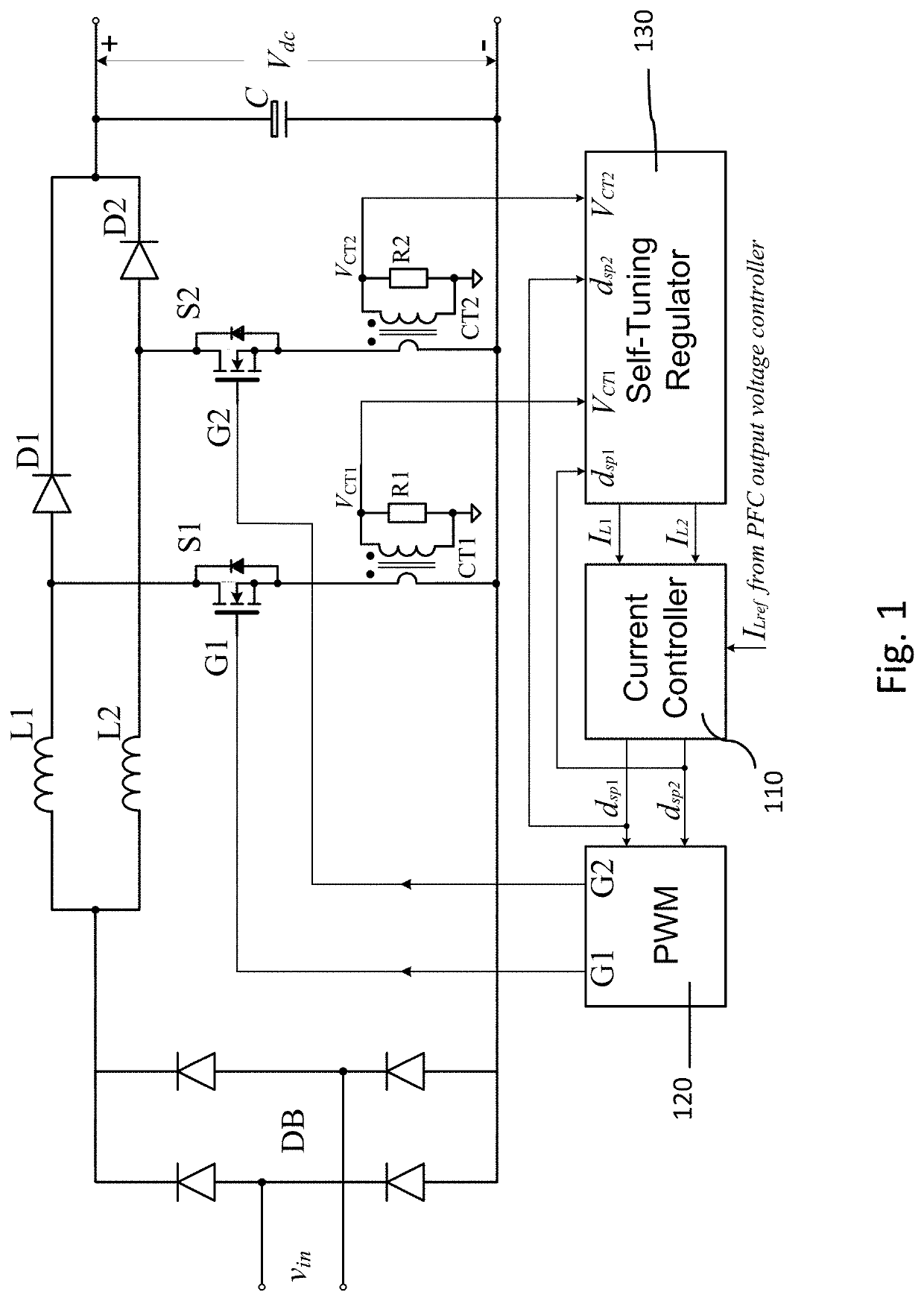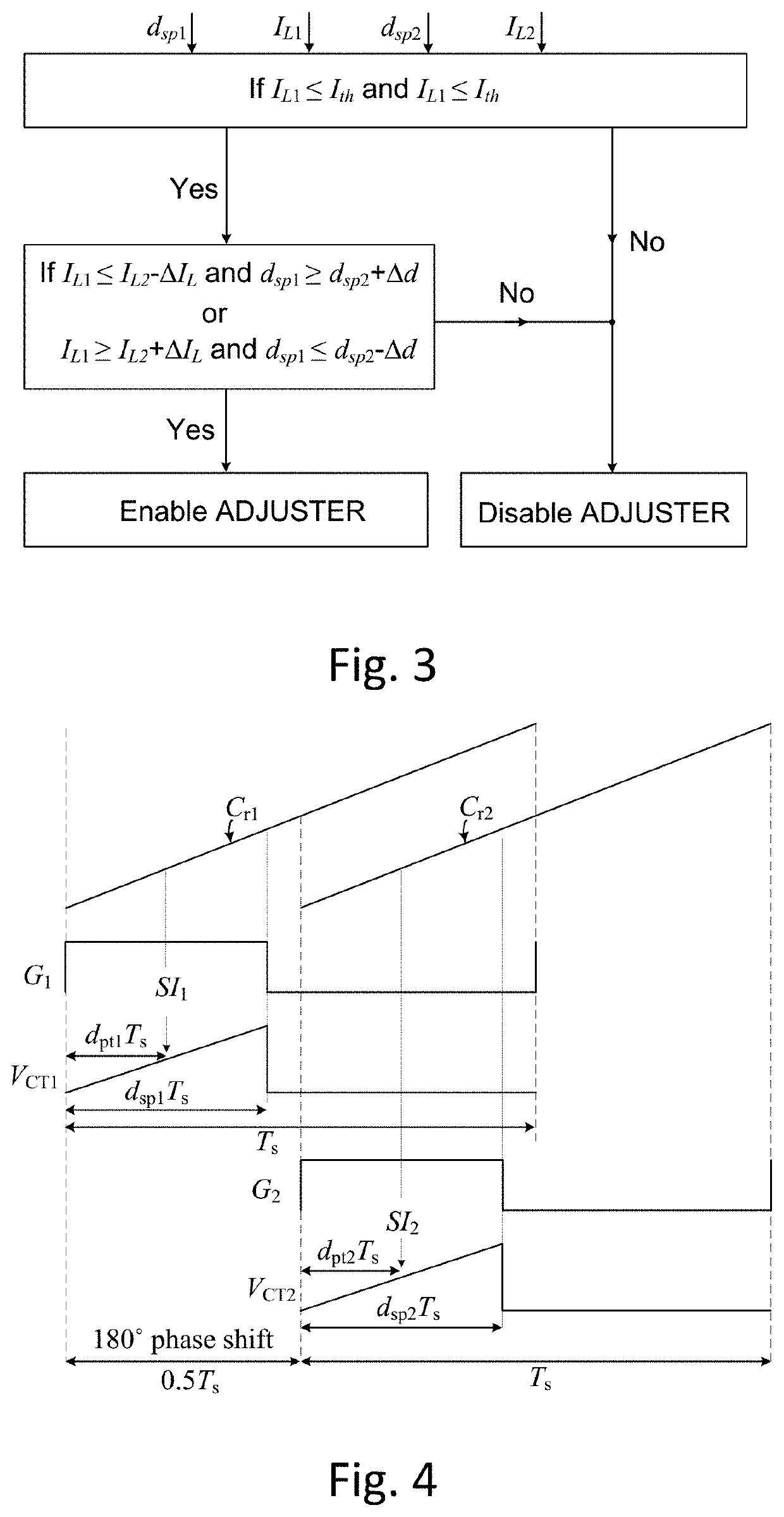Self-tuning regulator for interleaved power factor correction circuits and method of self-tuning regulation
a technology of power factor correction and self-tuning regulator, which is applied in the direction of electric variable regulation, process and machine control, instruments, etc., can solve the problems of unbalanced current, affecting sampling accuracy and resolution,
- Summary
- Abstract
- Description
- Claims
- Application Information
AI Technical Summary
Benefits of technology
Problems solved by technology
Method used
Image
Examples
Embodiment Construction
[0030]As shown in FIG. 1, an interleaved PFC circuit can include two parallel-interleaved phases or sub-circuits with a shared output capacitor C. Each phase or sub-circuit can include one inductor Lx, one diode Dx, and one transistor Sx, where x=1 or 2 to indicate the phase or sub-circuit number. The input voltage vin, which can be alternating current (AC) or direct current (DC), is connected to the interleaved PFC circuit through a diode bridge DB, which converts the input voltage vin into unregulated direct current (DC) voltage. The interleaved PFC circuit then boosts the unregulated DC voltage to a desired regulated DC voltage Vdc. Although FIG. 1 shows an interleaved PFC circuit with two parallel-interleaved phases or sub-circuits with a shared output capacitor C, an interleaved PFC circuit with more than two parallel-interleaved phases is possible.
[0031]In FIG. 1, a self-tuning regulator processes outputs of current transformers, VCT1 and VCT2, and outputs of the current contr...
PUM
 Login to View More
Login to View More Abstract
Description
Claims
Application Information
 Login to View More
Login to View More - R&D
- Intellectual Property
- Life Sciences
- Materials
- Tech Scout
- Unparalleled Data Quality
- Higher Quality Content
- 60% Fewer Hallucinations
Browse by: Latest US Patents, China's latest patents, Technical Efficacy Thesaurus, Application Domain, Technology Topic, Popular Technical Reports.
© 2025 PatSnap. All rights reserved.Legal|Privacy policy|Modern Slavery Act Transparency Statement|Sitemap|About US| Contact US: help@patsnap.com



